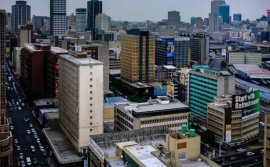
The task team investigating complaints about the stench experienced over parts of Gauteng and North West in June 2022 has determined that a combination of weather events and emissions from industry were probably responsible for the sulphurous smell.
The task team comprised environmental and air quality officials from the Department of Forestry, Fisheries and the Environment and the provincial departments in Mpumalanga, Gauteng, North West and the Free State.
The task team’s interim internal report, handed to Forestry, Fisheries and the Environment Minister, Barbara Creecy, reflects that the sulphur smell may have emanated from industry operations in the Secunda and Mpumalanga regions and as a result of unusual air circulation patterns that saw the smell being blown over Gauteng and parts of the North West during the week of five to 12 June 2022.
The task team’s investigations are ongoing to determine whether there was an industrial emergency that could have contributed to the malodourous smell that many people had detected and to determine the possible role that the prevailing meteorological conditions could have played in this regard.
“At this juncture, the interim investigations show that a low-pressure system in the north of the Mozambique channel caused a relatively unusual circulation pattern over the region during the days on which the public raised complaints about the strong sulphurous odour,” the Department of Forestry, Fisheries and the Environment said in a statement.
According to the department, these conditions may have created prevailing south-easterly winds that transported air pollution from Mpumalanga into Gauteng and the North West, particularly over Ekurhuleni, Johannesburg and Pretoria.
Ambient air quality monitoring observations reflected on the South African Air Quality Information System (SAAQIS) show that despite industry complying with air quality standards in Gauteng and Mpumalanga, ambient levels of sulphur dioxide were higher than usual during the period in question.
The interim investigation reflects that no emergency incident (upset conditions, start-ups or shut-downs) were reported by any facilities in Mpumalanga, North West, Gauteng and the Free State with the potential to release large quantities of sulphur dioxide and/or hydrogen sulphide in the week of seven to 12 June 2022.
Some of the public complaints about the sulphurous odour coincided with incidents when sulphur dioxide was higher than usual during the period in question.
However, the elevated readings were unlikely to have caused any health effects on the surrounding communities.
“The Task Team is to investigate and recommend possible policy interventions to further reduce hydrogen sulphide pollution and address concerns around public safety and the possible long-term health effects of exposure in order to improve the management of sulphur dioxide and hydrogen sulphide emission sources beyond the responses triggered by public complaints.
“The ongoing investigation will include engaging with industries from identified areas where hydrogen sulphide is of concern, to discuss short-term and long-term management of sulphurous odorants,” the department said. – SAnews.gov.za


